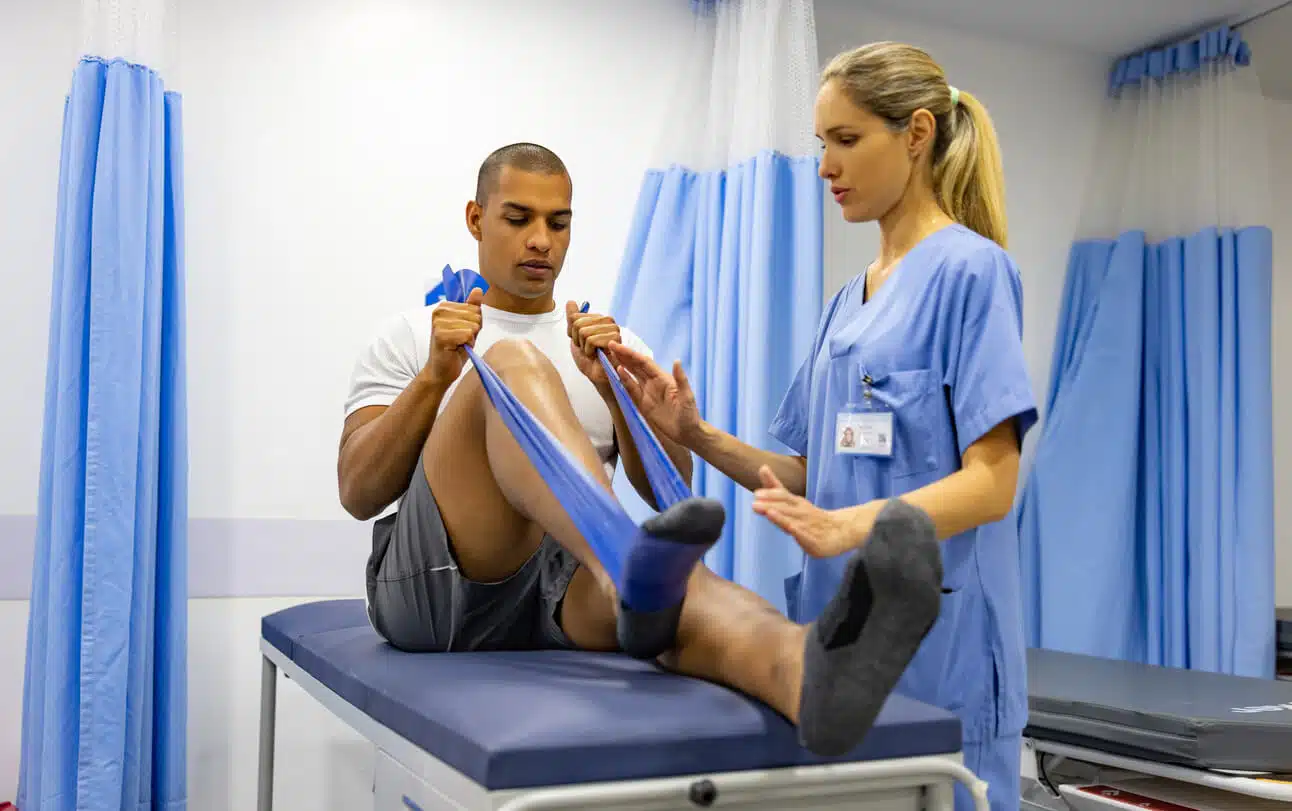
Rehabilitation following anterior cruciate ligament (ACL) surgery is a critical phase in the recovery journey for individuals seeking to regain optimal knee function and return to their desired level of physical activity. However, this process is not without its challenges, as there can be roadblocks to a successful post-operative rehabilitation that patients may experience.
In this article, we are going to explore some of the common rehabilitation challenges after ACL surgery and how they can be managed.
#1 Strength Deficits
Post-surgical strength deficits, usually found in the quadriceps and hamstrings, are frequently observed after ACL surgery. These weakened areas can hinder a patient from having a smooth successful rehabilitation process.
#2 Psychological Barriers
Psychological factors can significantly influence the rehabilitation process. A commonly reported psychological issue is a fear of reinjury. Patients may experience fear of reinjury, which can lead to avoidance of physical activities and reluctance to fully engage in the rehabilitation process. Loss of motivation is another, as patients may see their commitment waning when progress seems slow or when setbacks occur.
#3 Knee Stiffness
Stiffness in the knee joint is a recognized post-surgical issue that can impact the speed of recovery of individuals following ACL surgery, which is why gentle range-of-motion exercises are recommended as soon as after surgery.
#4 Scar Tissue Formation
The formation of scar tissue post-surgery can contribute to stiffness and reduced flexibility around the knee joint, thereby impacting the effectiveness of rehabilitation efforts.
#5 Graft Healing and Maturation
Ensuring proper healing and maturation of the graft within the reconstructed ACL is crucial for successful rehabilitation, and any delays in this process can pose significant roadblocks.
#6 Balance and Proprioception Impairment
Impaired balance and proprioception following surgery can affect the ability to perform weight-bearing activities and may hinder the progress of rehabilitation.
#7 Persistent Swelling and Inflammation
Prolonged swelling and inflammation post-surgery can limit mobility and hinder the rehabilitation process, necessitating appropriate management strategies.
Addressing Rehabilitation Challenges After ACL Injury
Below are some of the ways to manage the issues that can hinder a successful rehabilitation of the knee:
#1 Create Individualized Treatment Plans
Tailoring rehabilitation programs to address the specific needs and challenges faced by each patient can significantly enhance the effectiveness of ACL recovery. Customized plans should consider factors such as the patient’s age and activity level, as well as other issues that may come up, such as psychological barriers.
#2 Comprehensive Strength Training
Prioritizing comprehensive strengthening exercises targeting the areas of the hip and hamstrings is essential for addressing strength deficits and ensuring proper lower limb biomechanics. Progressive resistance training can also aid in restoring muscular balance and stability to the patient.
#3 Psychological Support
Integrating psychological support into the rehabilitation process can help patients overcome psychological setbacks and improve adherence to the prescribed rehabilitation regimen. Interventions such as offering consistent encouragement and emotional support to patients can boost their morale and motivation. This may involve acknowledging their progress and highlighting milestones throughout the rehabilitation journey.
Additionally, patients may need to identify and shift negative self-talk, which is important for rebuilding confidence and promoting a positive mindset during ACL recovery.
#4 Joint Mobility and Proprioception Training
Incorporating exercises focused on improving joint mobility and range of motion, as well as proprioceptive feedback can help mitigate knee stiffness and enhance dynamic stability. Balance and neuromuscular training are integral components of addressing post-operative joint instability.
One such training is reactive training, which involves incorporating movements that require the patient to respond to the surrounding environment, such as changes in direction or speed, under the guidance of a physical therapist. This helps simulate real-life scenarios and sports-specific movements.
#5 Patient Education and Support
Providing comprehensive education to patients about the challenges they may encounter during rehabilitation and offering support resources can empower them to navigate the recovery process effectively. Clear communication between the patient and their orthopedic care team about expected milestones and potential setbacks is essential for promoting realistic expectations and sustained motivation.
ACL Surgery in North Dakota
The highly qualified and experienced team of orthopedic specialists at The Bone & Joint Center can treat your ACL injury with great expertise. We are used to working with individuals of all activity levels and can ensure you will get a personalized treatment plan that works for you.
To schedule an appointment for the treatment of an ACL injury, call us today at (701) 946-7400 / (866) 900-8650 or use our online request form. The friendly team of professionals at The Bone & Joint Center looks forward to serving you.

